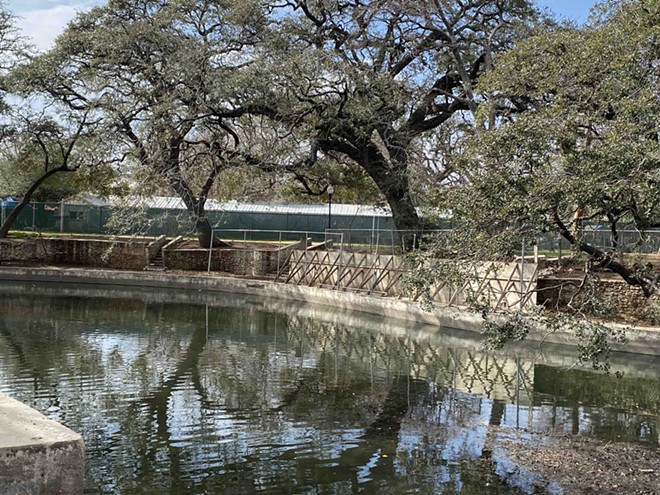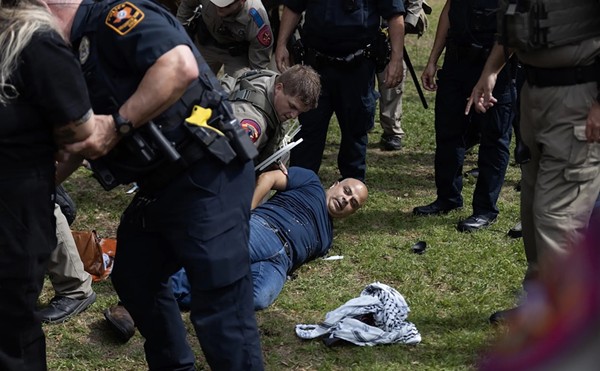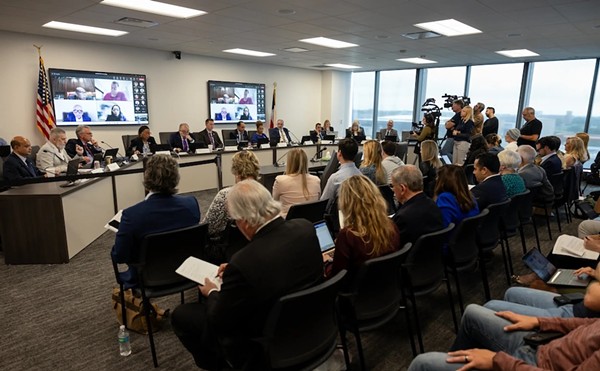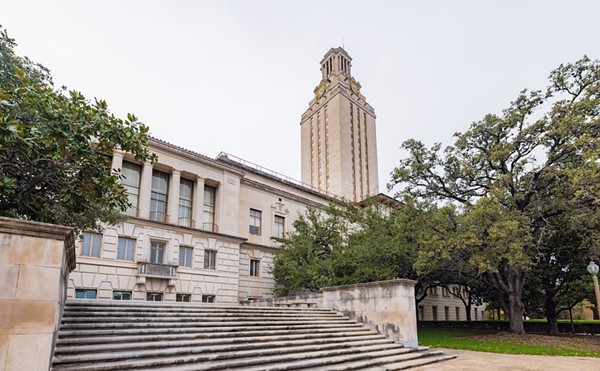
City staff’s effort to fell 104 trees, including 10 heritage specimens, at Brackenridge Park to repair a crumbling, 80-year-old wall must stop. It’s an embarrassing statement about San Antonio’s governance that the plan got this far.
The controversial proposal would remove dozens of trees in one of the city’s most revered green spaces as part of an effort to restore the Lambert Beach river walls and other historical structures approved for repair under Brackenridge Park’s 2017 bond project.Environmental advocates, neighborhood groups and park visitors are rightfully outraged by the plan, which the city has deliberately tried to shield from scrutiny while offering the flimsiest of justifications.
In case you haven’t been following the story, the city’s Historic and Design Review Commission last Wednesday delayed a decision that would have effectively given a green light to the trees’ removal. As of press time, it appears the HDRC is likely to meet again on Friday, Feb. 25.
(Editor's note: Since publication of this piece, city officials issued a news release saying they will delay the HDRC's consideration "while the city and its consultants complete the design work for the 2017 Bond Project. In the meantime, the City will work with the Texas Historical Commission and reengage a committee of Brackenridge Park stakeholders to ensure that historic structures in the park are adequately protected and the removal of heritage trees is minimized." The announcement set no timeline for that process.)
During last Wednesday’s meeting, Bill Pennell, assistant manager of the city’s Parks and Recreation Department, and other city staffers argued that the trees’ removal is needed to protect the historic structures and ensure public safety. They promised to plant 219 new trees in the park to offset the environmental effects.
However, more than 30 residents voiced alternatives to cutting down the trees, fewer than two dozen of which are dead or invasive species. The walls, they argued could be moved or simply taken out along sections of the river to protect the vegetation.
They also delivered impassioned arguments that the trees’ removal would degrade the quality of the park experience, destroy birds’ natural habitats and run counter to the city’s Climate Action Plan. Further, they maintained, the city’s own tree ordinance includes a 100% prohibition of removing heritage trees, or those 24 inches or more in diameter.
City officials argue that Texas historical preservation rules make it nearly impossible to simply shift or remove sections of the wall. They also maintain that the tree ordinance makes exceptions for cutting heritage trees when they pose a danger.
However, in defending their proposal during the meeting, city staff faced criticism from HDRC commissioners for failing to present plans for how they will restore historic structures in the park once the trees are downed.
Further, Parks and Rec’s Pennell told the commissioners there are “no historical trees in the area,” meaning those 200 years or older, only to be contradicted moments later by city arborist Mark Bird who said, “We don’t know that we could successfully age these trees.”
Government Hill Alliance President Rose Hill, who sat on the 2017 bond committee and spoke against the tree removal, said widespread changes to the park’s natural landscape were never discussed during bond hearings.
“I was there, and that’s not what was promised to voters,” she said in a phone interview.
Further, Hill argues that staff never gave the public sufficient notice about the proposed tree removal, noting that she only found out after a tip from someone inside the city.
The way city officials handled the process gives credence to Hill’s claim.
The first chance for public input on the plan came during a Wednesday, Jan. 26, Planning Commission meeting. Only four people showed up to voice opposition, and a mere 16 left voice mails, according to the San Antonio Report. That doesn’t suggest a process open to public scrutiny.
Further adding to the murkiness, officials with the city of San Antonio’s Parks and Recreation and Public Works departments abruptly canceled a media preview of the Brackenridge project scheduled for Friday, Jan. 28, the Express-News reports. The cancelation, made 30 minutes before the event, came after protesters gathered in the park to raise concerns about the trees’ removal.
As a result, many in the community were unaware of the plan until it was on the agenda of the HDRC, its last apparent hurdle before city employees began removing trees from the park. Indeed, many more only learned about the proposal after media reports about that meeting trickled out.
On the HDRC meeting agenda, the Brackenridge Park item was listed simply as “Removal of heritage and significant trees at top of bank and along the river,” offering little suggestion of the size and scope of the project.
In a letter to city council members Mario Bravo and Jalen McKee-Rodriguez, Bexar County Commissioner Tommy Calvert noted that the city hasn’t formally submitted its plans to the Texas Historical Commission. That offers a chance for council to step in and ensure that the plans are consistent with the Climate Action Plan, he added.
“We can review, rethink and reimagine alternatives that are appropriate for this ancient site that means so much to the residents of Bexar County,” Calvert wrote.
Calvert’s point is well taken: if city staff can’t be bothered to consider the input of San Antonio’s residents, perhaps members of council will. After all, their jobs are in those residents’ hands.
Stay on top of San Antonio news and views. Sign up for our Weekly Headlines Newsletter.



















